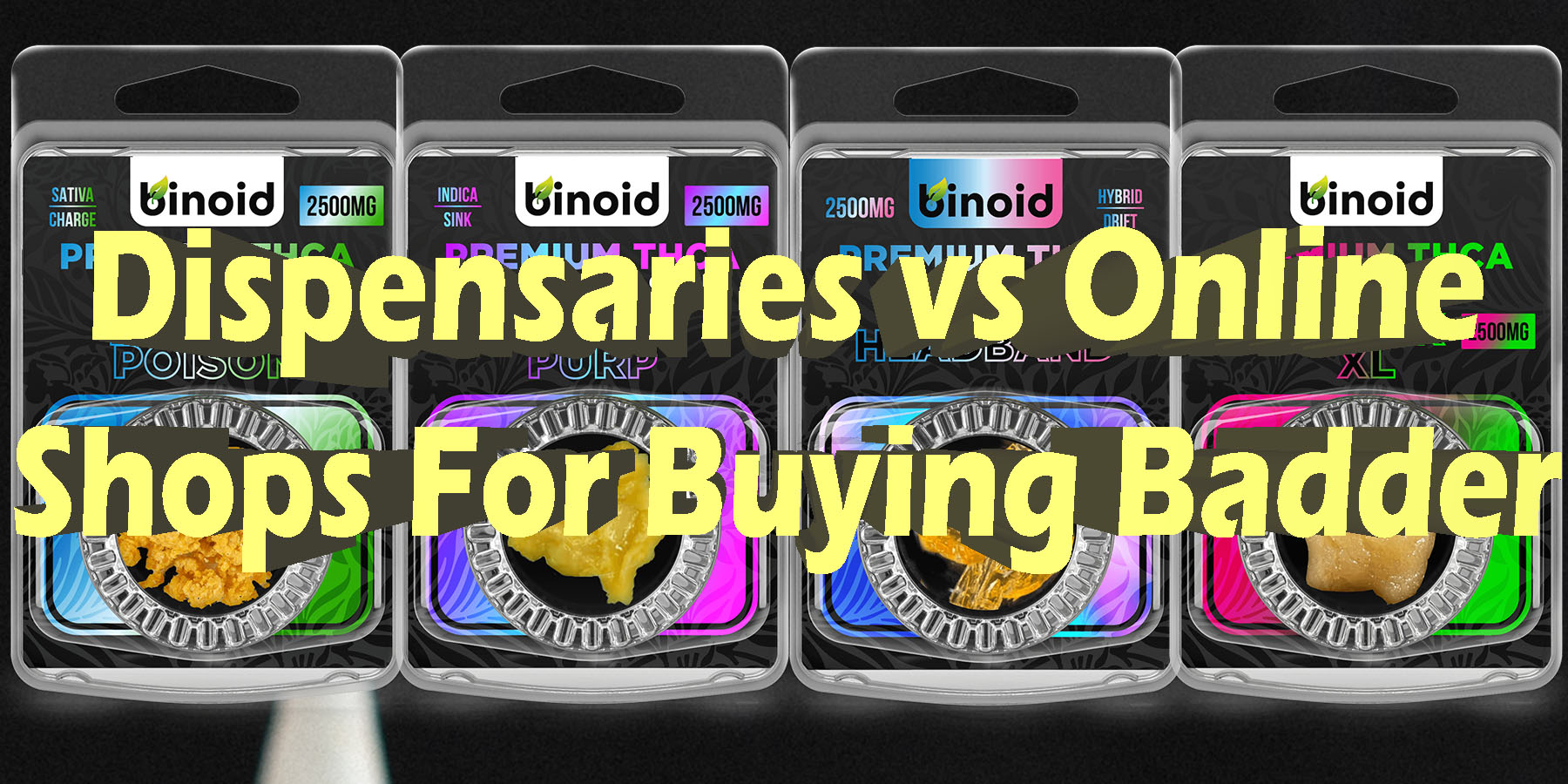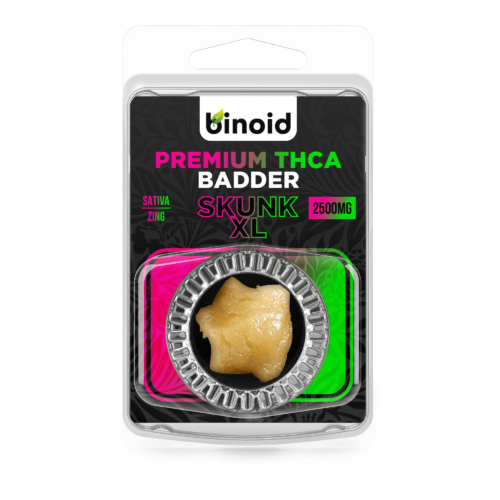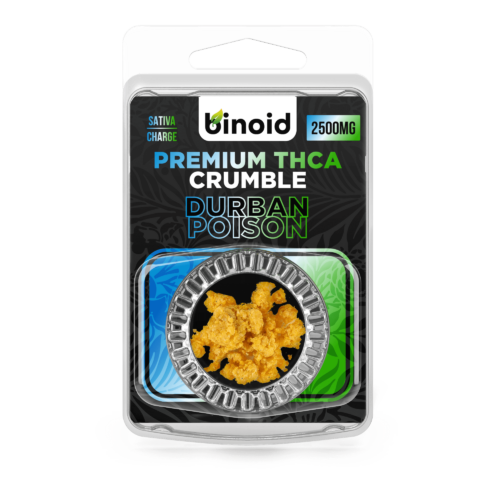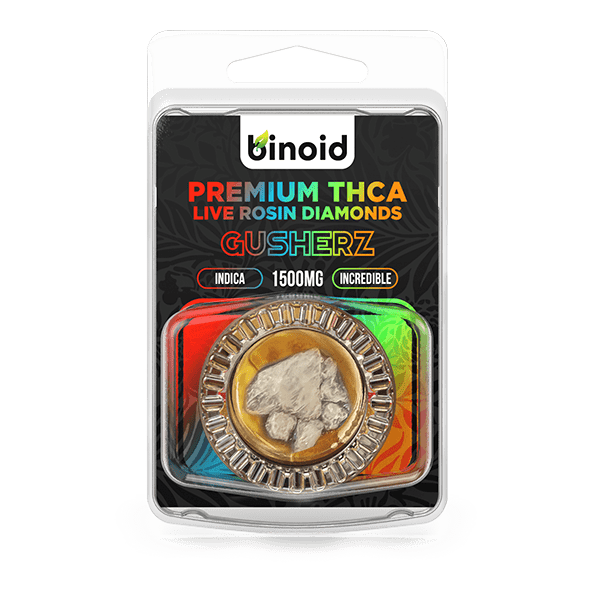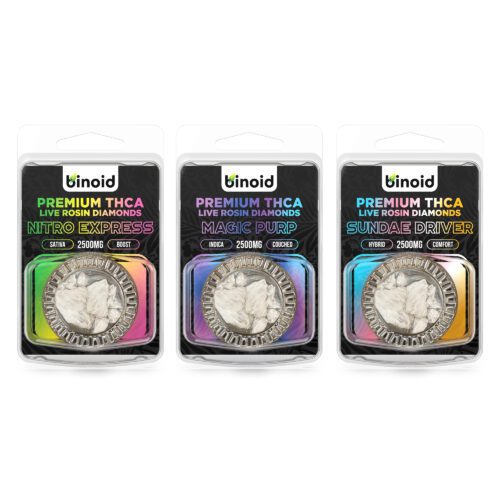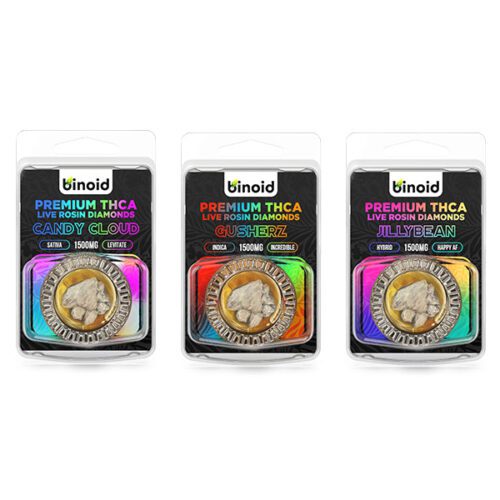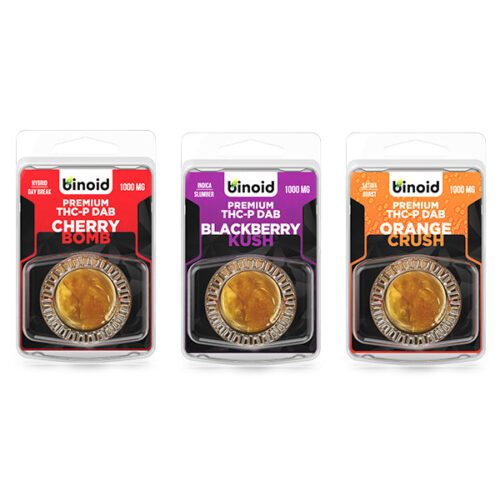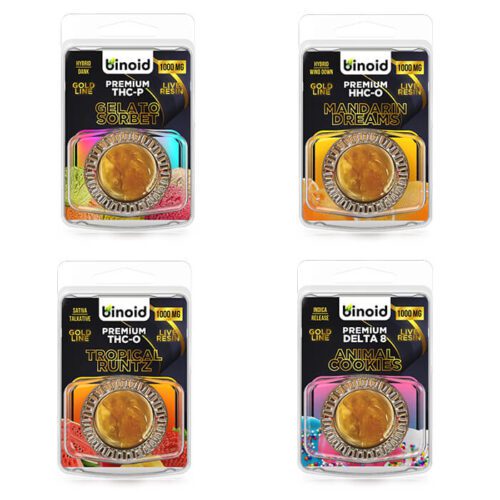The diverse and dynamic world of cannabis concentrates continually introduces enthusiasts to a remarkable array of textures, potencies, and aromatic experiences, each offering a unique pathway to enjoyment. Among these, “badder” has carved out a distinct niche, admired for its characteristically pliable, cake-batter-like consistency and its often potent, flavorful profile.
For consumers looking to acquire this unique and easy-to-handle concentrate, the question of where to source it reliably often comes to the forefront: should one navigate the familiar, regulated aisles of a local dispensary, or explore the broad and accessible digital landscape of online vendors? This decision involves more than a simple transaction; it’s about aligning your individual preferences for product discovery, expert interaction, and purchasing convenience with the avenue that best serves your needs.
TO BUY THC PRODUCTS CLICK HERE
Recommended products
Getting to Know Cannabis Dispensaries and Online Cannabis/Hemp Shops and Their Purposes
Before we delve into the specific attributes of cannabis badder and the most suitable places to obtain this popular concentrate, it is advantageous to have a clear understanding of the two primary retail environments that characterize today’s cannabis and hemp commerce. Both traditional, physical dispensaries and contemporary, digital online shops serve as vital channels for consumers seeking these products.
However, they operate under significantly different business models and are subject to distinct regulatory landscapes, which in turn cultivate varied customer experiences and expectations. Gaining insight into these retail settings will provide a robust foundation for appreciating how they cater to a wide spectrum of consumer preferences and priorities, particularly when one is on the pursuit of specific types of cannabis concentrates.
Understanding Cannabis Dispensaries and Their Purpose
A cannabis dispensary is a state-authorized, physical retail establishment legally permitted to sell cannabis-derived products directly to eligible consumers. These stores have become an increasingly familiar presence in numerous communities throughout the nation, marking a significant evolution in cannabis accessibility driven by progressive state-level legislative changes.
The fundamental purpose of a dispensary is to furnish a meticulously regulated and secure environment where adult consumers, or registered medical patients, can lawfully obtain a variety of cannabis goods, which naturally include flowers, a range of edibles, topical applications, and an array of concentrates. They are specifically designed and managed to ensure unwavering compliance with stringent state-mandated regulations, covering crucial aspects such as thorough age verification processes and clearly defined limitations on purchase quantities. This comprehensive regulatory oversight forms the very bedrock of their daily operations, with a primary aim of promoting consumer safety.
The architectural design and internal ambiance of a typical dispensary are often thoughtfully developed to reflect its dual commitment to stringent security protocols and the creation of a welcoming, informative atmosphere for its clientele. Generally, upon entry, patrons are first directed to a reception or check-in area where personal identification is carefully scrutinized by staff to rigorously confirm legal age or verify valid medical marijuana program registration.
Once cleared, the customer enters the main retail space, which can vary significantly in its aesthetic presentation, from sleek boutiques to more clinically oriented settings. THC products are customarily displayed within secure, often locked, glass showcases, accompanied by detailed menus, whether presented on digital screens or in printed form, that offer exhaustive information regarding various available strains, specific cannabinoid and terpene profiles, and anticipated effects. A signature element of the dispensary experience is the presence of “budtenders.”
Dispensaries fulfill a pivotal and multifaceted role within the local economies and social fabric of the communities in which they are established. They operate as a critical intermediary, bridging the gap between licensed cannabis cultivators and processing facilities, and the ultimate end-user of the cannabis products. These establishments frequently represent a substantial source of local employment opportunities and contribute significantly to both state and municipal tax revenues, thereby integrating themselves as active participants in the economic vitality of their respective regions.
Beyond their purely commercial functions, a large number of dispensaries proactively embrace an important educational role. They strive to equip their patrons with accurate, science-informed resources and accessible information concerning the principles of responsible cannabis use and the nuanced distinctions that exist between various product categories and their potential applications.
Also, an indispensable purpose of any dispensary is to rigorously uphold and consistently ensure the quality, safety, and integrity of the products it offers, operating strictly within the confines of their state’s specific cannabis testing and compliance requirements. Licensed cannabis cultivators and product manufacturers who supply these retail outlets are legally obligated to adhere to clearly defined laboratory testing protocols designed to accurately determine cannabinoid potency and to meticulously screen for a range of potential contaminants, including pesticides or residual solvents.
The “seed-to-sale” tracking systems, which are a common fixture in most mature and regulated cannabis markets, introduce an essential layer of transparency and robust accountability into the supply chain. These systems enable individual products to be painstakingly traced from their initial point of cultivation or creation all the way through to the final point of sale.
Understanding Online Cannabis/Hemp Shop and Their Purpose
An online cannabis or hemp shop is essentially a digital, e-commerce storefront that provides consumers with the capability to browse, evaluate, and purchase an extensive variety of cannabis or hemp-derived products through the internet. Upon completion of a purchase, these selected items are then systematically shipped directly to the customer’s specified residential or business address. The overarching purpose of these increasingly popular online platforms is to furnish a highly convenient, often more discreet, and geographically unconstrained alternative to the conventional experience offered by physical, brick-and-mortar dispensary locations.
The scope and operational models of these online shops can exhibit considerable variation; some function as direct-to-consumer (DTC) brands, managing their own product lines from formulation to final sale. Conversely, other online shops operate more like curated digital marketplaces, stocking and retailing a wide assortment of products sourced from numerous third-party brands, offering broader selections.
The notable ascent and widespread proliferation of online hemp shops, in particular, have been inextricably linked to and significantly propelled by key federal legislation that reclassified hemp based on its Delta-9 THC concentration. This legislative action distinguished hemp from marijuana, stipulating that hemp and its derivatives must contain no more than 0.3% Delta-9 THC on a dry weight basis to be considered federally legal.
This pivotal legal distinction has effectively authorized online retailers to legally ship compliant hemp-derived products across state lines. This capability allows them to reach a vast consumer base in regions where state-licensed dispensaries may be entirely absent or where particular cannabinoid products might not be locally accessible via traditional retail channels. Consequently, these online vendors serve a crucial function in substantially expanding consumer access to a diverse range of hemp-derived cannabinoids.
The successful operational execution of an online shop necessitates an unwavering and meticulous focus on several key areas: crafting a seamless and intuitive user experience, implementing highly efficient and reliable logistical operations, and maintaining absolute digital transparency, especially concerning product quality and safety.
A well-designed and reputable e-commerce website will invariably feature clearly defined product categorizations for easy navigation, comprehensive and accurate product descriptions, high-quality product images, and prominently displayed, easily accessible third-party laboratory reports, commonly known as Certificates of Analysis (CoAs), for every product batch offered for sale. These CoAs are of particular and paramount importance in the online retail sphere. They furnish independent, unbiased, third-party verification of a product’s precise cannabinoid composition and its confirmed safety profile, building essential trust with consumers who cannot physically inspect items prior to purchase.
Moreover, online cannabis and hemp shops often position themselves at the forefront of product innovation and catalog diversity, demonstrating impressive agility and responsiveness in adapting to newly emerging market trends and dynamically shifting consumer preferences. Because these digital retailers are not typically constrained by the same physical shelf space limitations or localized inventory pressures that affect traditional brick-and-mortar stores, they are frequently able to offer a substantially more extensive, varied, and highly specialized range of products.
This often includes access to niche items, newly identified or synthesized minor cannabinoids, unique terpene blends, and avant-garde product formulations that might prove exceptionally challenging to locate within the confines of local dispensaries. This inherent dynamism allows them to effectively cater to an increasingly sophisticated and well-informed clientele, many of whom may be actively seeking very specific product attributes or novel cannabinoid experiences unavailable elsewhere.
Recommended products
Exploring the Wonders of Badder
Badder is a distinct and widely appreciated form of cannabis concentrate, easily recognized by its unique, pliable, and smooth texture, often resembling cake batter or thick frosting. Unlike its drier counterparts like crumble or shatter, badder’s defining characteristic is its rich, malleable consistency, which makes it remarkably easy to handle and portion, especially for dabbing or adding to flower.
This particular consistency is achieved through specific agitation, whipping, and temperature control techniques during the post-extraction and purging process, which results in a more aerated, creamy, and less sticky final product. Its popularity is buoyed by its typically high potency, robust flavor profiles due to excellent terpene retention, and its user-friendly nature across various consumption methods. It’s important not to confuse “badder” with “budder,” another concentrate that can have a consistency similar to softened butter.
The history of badder, much like other highly refined cannabis concentrates, is intertwined with the evolution of solvent-based extraction methods that gained significant traction within the cannabis community over the past two decades. As extractors diligently refined their techniques for producing potent oils, they discovered that precise variations in temperature, controlled agitation, and specific vacuum pressure during the solvent purging phase could lead to a wide array of final textures.
Badder, also sometimes called “batter,” emerged as one such highly desirable consistency, particularly valued for its relatively low moisture content, its exceptional ability to preserve delicate terpenes, and its enhanced ease of handling compared to more viscous oils or harder shatters. Its development was part of a broader, ongoing trend within the concentrate scene toward offering consumers a diverse palette of textures, each presenting slightly different handling properties and nuanced experiential qualities, allowing for more personalized cannabis consumption.
The science and chemistry behind badder’s formation involve careful manipulation of the cannabis extract post-extraction to encourage its specific smooth, pliable, and opaque structure. Typically produced using hydrocarbon solvents like butane or propane, the initial extract is a crude oil rich in cannabinoids (like THCA) and terpenes. The key to achieving badder’s distinct texture lies in the purging process: the oil is often gently whipped or agitated at relatively low temperatures while under vacuum.
This continuous mechanical agitation, combined with controlled heat and vacuum, helps to fully remove residual solvents and introduces air into the matrix, causing the cannabinoids to nucleate and crystallize in a way that creates a smooth, homogenous, and less crystalline texture than shatter, yet not as dry and crumbly as crumble. The meticulous control of heat throughout this process is crucial for preserving the delicate and volatile terpenes, which contribute significantly to badder’s highly praised aroma and flavor.
The effects experienced from consuming badder are notable for their significant potency and typically rapid onset, often offering a more intense experience than traditional cannabis flower. As a highly concentrated form of cannabinoids, primarily THCA that efficiently converts to psychoactive Delta-9 THC when heated, badder can induce strong euphoric states, heightened sensory perception, and a broad spectrum of effects that can range from deep potential relief and physical relaxation to invigorating mental clarity and creative stimulation, depending on the source strain’s original cannabinoid and terpene makeup. The exceptionally well-preserved terpene profile in badder not only defines its distinct aroma and rich taste but also plays a crucial role in modulating the overall experience through the entourage effect, making each batch of badder potentially unique in the sensations it provides, from blissful uplift to focused calm.
Cannabis badder is a versatile concentrate that’s well-suited for a couple of primary methods, favored for its ease of handling and potent delivery. Let’s break this down further for a moment:
-
Dabbing with a Dab Rig or E-Nail: This is arguably the most popular and effective way to consume badder. Its pliable texture makes it exceptionally easy to scoop with a dab tool and place onto a heated nail or banger of a traditional dab rig, or onto the precise surface of an e-nail. The instantaneous heat rapidly vaporizes the badder, producing a potent and flavorful vapor that is then inhaled, offering immediate and powerful effects. Dabbing allows for excellent temperature control, which is vital for preserving the delicate terpenes and maximizing the flavorful experience.
-
Vaping with a Portable Vaporizer: Many portable vaporizers specifically designed for concentrates can comfortably accommodate badder. Users can load small, manageable pieces of the badder into the device’s heating chamber. The vaporizer then precisely heats the concentrate to produce an inhalable vapor, offering a more discreet and conveniently portable option than a traditional dab rig. This method is ideal for on-the-go use, allowing users to enjoy badder’s effects and flavors with relative ease and minimal setup.
The adaptable nature of badder also means it can be formulated to feature or be infused with a variety of cannabinoids, particularly within the ever-innovating hemp-derived product space, allowing for tailored experiences:
-
Delta 8 THC: Badder featuring Delta 8 THC (often hemp-derived) delivers a psychoactive experience that is generally reported as being milder and more focused on bodily relaxation compared to Delta 9 THC, offering a unique subtle euphoria.
-
Delta 9 THC: Traditional badder derived from marijuana is potent in THCA, which converts to Delta 9 THC upon heating, providing the classic powerful euphoric and psychoactive effects that many consumers seek.
-
THCA: Hemp-derived badder can be specifically high in THCA. This form is minimally psychoactive until heated, at which point it efficiently converts to potent Delta 9 THC, offering a strong experience while adhering to federal Delta 9 THC limits in its raw state, making it a popular choice.
Recommended products
Why Can Badder Be Found at Either a Dispensary or an Online Shop?
The availability of cannabis badder in both state-licensed dispensaries and through a wide array of online e-commerce platforms is primarily a consequence of the distinct legal pathways established for marijuana-derived versus hemp-derived products within the United States. These parallel regulatory systems allow for different types of badder concentrates to reach consumers through these separate channels, each operating under specific compliance frameworks.
State-regulated dispensaries are the traditional, authorized outlets for badder derived from marijuana plants. These products generally contain levels of Delta-9 THC (or THCA that readily converts to Delta-9 THC upon heating) that place them under the strict jurisdiction of individual state cannabis control programs. These programs meticulously oversee all facets of production, from the cultivation of the source cannabis to the extraction processes, comprehensive laboratory testing for potency and purity (including screening for residual solvents), specific packaging requirements, and stringent sales protocols.
Conversely, the badder found on many online shops is almost exclusively derived from hemp, which is federally legal under recent legislation (2018 Farm Bill) that defines hemp as cannabis containing no more than 0.3% Delta-9 THC by dry weight. This pivotal federal stance has paved the way for online vendors to offer various hemp-derived badder products, such as those rich in high THCA (which becomes psychoactive only when heated but is compliant in its raw form) or those formulated with other hemp-derived cannabinoids like Delta 8 THC, thereby making these products accessible to a broader national consumer base.
Breaking Down the Badder Buying Matchup: Dispensaries vs. Online Shops
When you’re set on acquiring cannabis badder, known for its uniquely pliable yet potent texture and impactful effects, the decision of where to make your purchase—a traditional state-licensed dispensary or the accessible realm of online shops—is a key consideration. Each path offers a distinct purchasing experience, with its own set of benefits and potential limitations that can influence everything from product variety and informational resources to pricing and overall convenience. Understanding the unique characteristics of each option will empower you to choose the source that best aligns with your personal preferences and specific requirements for this popular cannabis concentrate.
Contender #1: Dispensaries
State-licensed dispensaries serve as established, physical locations where consumers can legally purchase high-quality concentrates like cannabis badder. These retail outlets operate under strict state regulations that oversee product sourcing, testing, and sales, providing a controlled purchasing environment. For many, dispensaries offer a trusted and familiar way to explore these potent, often aromatic extracts. A key characteristic is the direct interaction with products, to the extent packaging allows, and knowledgeable staff, culminating in the immediate acquisition of chosen items—a significant draw for those who prefer not to wait for their desired concentrate.
The dispensary experience for obtaining badder is often centered on compliance and personalized customer service. Budtenders are typically available to explain the nuances of different badder batches, such as their expected potency, terpene profile (which dictates flavor and modulates effects), or its characteristic smooth, pliable texture, helping guide selections based on individual preferences. This direct consultation can be especially useful for those newer to dabbing this type of concentrate or those seeking specific effects like profound euphoria or enhanced focus.
Furthermore, badder products sold in dispensaries undergo mandatory state testing, offering a robust level of assurance regarding their cannabinoid profile and purity from certain contaminants, especially residual solvents from the extraction process.
Pros & Cons
Opting for a dispensary as your source for cannabis badder comes with a specific array of advantages and potential drawbacks. These elements can significantly influence whether this conventional retail option aligns with your particular requirements for convenience, product access, expert advice, and overall satisfaction when seeking this widely enjoyed concentrate.
Pros:
-
Immediate Product Acquisition: The most evident benefit is selecting your cannabis badder and taking it home without any delay for shipping or processing, fulfilling immediate needs.
-
Expert In-Person Guidance: Budtenders can offer personalized recommendations, explain the characteristics of different badder products (e.g., texture, strain origin, terpene profile), and discuss ideal dabbing or vaping techniques.
-
Tangible Product Assessment (Limited): Although typically pre-packaged, consumers can often visually inspect the badder through its container, assessing its color, pliability, and general appearance.
-
Support for Local Economy: Purchases made at local dispensaries directly contribute to the local business ecosystem, supporting jobs and generating tax revenue for the community.
-
Assured Regulatory Compliance & Testing: Products sold in dispensaries must adhere to state-specific testing standards for potency, purity, and importantly for badder, residual solvents, offering consistent quality control.
-
No Shipping Concerns: This option eliminates anxieties related to shipping delays, potential damage to the delicate badder during transit, or the security of the delivered package.
-
Discovery of Local Craft Products: Dispensaries often feature badder from smaller, local extractors who specialize in artisanal concentrates that may not be widely available online, providing unique finds.
Cons:
-
Geographical Limitations: Access is restricted to individuals living in or able to travel to states with legal cannabis dispensaries, and store locations might not always be conveniently accessible.
-
Typically Higher Price Points: The operational costs of a physical storefront, including rent, staffing, and compliance fees, can often result in higher retail prices for badder compared to some online sources.
-
More Limited Selection: Due to physical space constraints and specific licensing, a dispensary’s inventory of badder brands, specific strain varieties, or unique cannabinoid blends might be less extensive than what larger online retailers offer.
-
Restricted Hours of Operation: Dispensaries operate within specific business hours, limiting purchasing opportunities to those times, unlike the constant, around-the-clock availability of online stores.
Recommended products
Contender #2: Online Shops
Online cannabis and hemp shops have swiftly become major players for sourcing high-quality concentrates like cannabis badder, offering a modern and direct purchasing route. These digital storefronts leverage the internet’s vast reach to serve a national clientele, sidestepping geographical limitations. Their core appeal for enthusiasts of these potent extracts often lies in the sheer convenience of Browse from anywhere, accessing an expansive selection that frequently includes unique or hemp-derived badder formulations (featuring cannabinoids like THCA or Delta 8), and enjoying a discreet shopping experience with delivery direct to their door. Online retailers can showcase a remarkable diversity, connecting consumers with numerous producers and specialized small-batch offerings that might be otherwise unavailable locally.
Purchasing cannabis badder online is typically characterized by detailed product information and easy comparison of different options. Reputable e-commerce platforms provide comprehensive descriptions, including details on cannabinoid profiles and terpene content, and critically, direct access to third-party Certificates of Analysis (CoAs). This ensures transparency about potency and purity, including residual solvent testing for solvent-based badders, before any commitment is made, empowering buyers to research thoroughly and choose with confidence.
Not to mention, leading online vendors invest in user-friendly websites, secure transaction processes, and reliable shipping methods, often complemented by educational resources and responsive customer support to build trust and guide consumers in their selection of these potent concentrates.
Pros & Cons
Opting for an online shop to source your cannabis badder presents an appealing list of benefits, while also carrying some inherent considerations that warrant attention. These aspects underscore the modern conveniences and unique dynamics of purchasing concentrates through digital platforms, especially for popular products like THCA badder.
Pros:
-
Exceptional Convenience and 24/7 Access: The ability to browse and buy cannabis badder at any time, from any location with an internet connection, with products delivered directly to your door, offers ultimate ease and flexibility.
-
Broader Product Variety and Niche Offerings: Online shops generally boast a more extensive inventory, often featuring a wider array of badder textures, diverse strain selections, and numerous hemp-derived cannabinoid options.
-
Competitive Pricing and Promotions: Reduced overhead compared to brick-and-mortar stores can lead to more attractive pricing for badder, with online retailers frequently offering sales, bulk discounts, and loyalty rewards.
-
Discreet Purchasing Experience: For consumers who prioritize privacy, online shopping provides a confidential method for acquiring badder, typically delivered in plain, unmarked packaging.
-
Comprehensive Information and Lab Verification: Reputable online stores provide extensive product details, customer reviews, and easily accessible third-party CoAs, ensuring transparency regarding the badder’s contents and safety.
-
Wider Geographic Reach (especially for Hemp Products): Hemp-derived badder (e.g., THCA or Delta 8 based) can often be shipped to many states across the U.S., including those lacking legal marijuana dispensaries, significantly expanding accessibility.
-
Access to Specialized and Craft Producers: The online marketplace is an excellent venue for discovering artisanal or boutique brands that specialize in high-quality badder but may not have widespread dispensary distribution.
-
Pressure-Free Browse and Research: Customers can take their time to explore options, compare different badder products, and conduct thorough research without feeling rushed by in-person sales environments.
Cons:
-
No Physical Product Inspection Pre-Purchase: Consumers cannot physically see or assess the true texture, aroma, or consistency of the badder before buying, relying entirely on product images, descriptions, and lab reports online.
-
Shipping Delays and Potential Complications: Delivery is not instantaneous and can take several days; there’s also a minor risk of shipping errors, potential damage to the delicate THCA badder during transit if not packaged well, or package security issues.
-
Need for Diligent Vendor Vetting: The online realm necessitates careful research to identify trustworthy sellers of badder; while many are reputable, there’s a possibility of encountering sites with inaccurate information or lower quality control.
-
Absence of Immediate, Face-to-Face Support: While online customer service is usually available via chat or email, it differs from the immediate, interactive dialogue possible with a budtender for instant advice on specific badder products or consumption methods.
Which Option is the Best for Your Badder Needs?
Selecting the ideal source for cannabis badder, a concentrate prized for its user-friendly texture and impactful effects, is ultimately an exercise in aligning your purchasing preferences with the distinct characteristics of each retail environment. There is no single, definitive answer, as the “best” choice is inherently personal, reflecting what you value most in acquiring your cannabis THCA products.
For those who prioritize the immediacy of the purchase, the ability to engage in direct conversation with knowledgeable staff, and the tangible reassurance of a regulated, local establishment, the dispensary often provides a deeply satisfying and trustworthy experience. This path appeals to a desire for a curated selection and the comfort of an established community presence, offering a hands-on approach to obtaining your preferred concentrate.
And yet, the digital marketplace offers a compelling counterpoint, unfurling a vast and dynamic landscape for the THCA badder connoisseur. Online shops serve as powerful gateways to an unparalleled breadth of options, often featuring an extensive array of producers, innovative hemp-derived formulations, and the sheer convenience of exploration from any location, at any time. This realm particularly empowers the self-reliant consumer, providing robust tools for in-depth research and fostering a sense of direct access to a wider world of cannabis innovation, frequently at more competitive prices.
So, while the hands-on experience of a local dispensary holds its intrinsic value, the online sphere increasingly caters to those who embrace broad choice, pioneering products, and the autonomy of a personalized digital journey. Still, it is your optimal experience that awaits, as that’s where your individual needs for quality, convenience, and connection find their most fitting expression.

